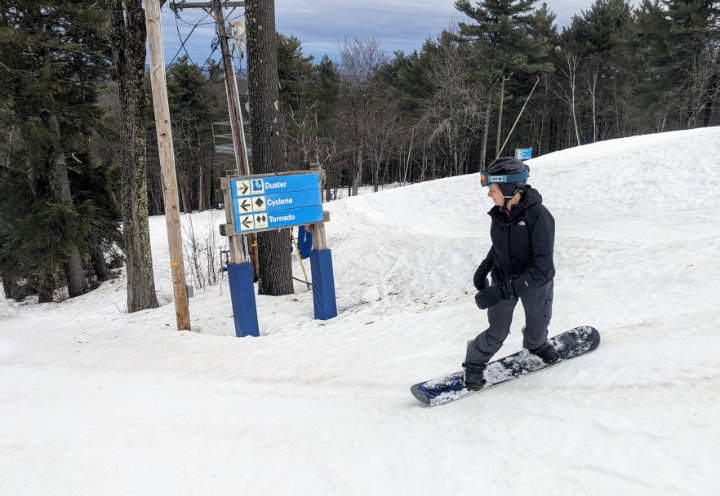The Unknown Soldier Identified

by Robert Hanaford Smith, Sr.
Weirs Times Contributing Writer
Two thousand nine hundred and ten New Hampshire residents who served in the Union forces during the Civil War were unaccounted for at the end of the conflict. This is the story of one who was almost the 2,911th.
Lieutenant W.A. Nason of the Eleventh N.H. Volunteer Regiment, remembered the morning of July 1, 1864 as “…one of the brightest and clearest one could imagine or ask for..” as he prepared for his duties, when he met the ward-master in charge “of the pavilion where the wounded officers were quartered”. The ward-master persuaded Lieutenant Nason to accompany him in visiting some wounded officers, explaining that even with the suffering they were enduring they were happy to have visitors. After visiting with several of the wounded he was taken to two brothers from Maine who had not realized that the other was wounded until they met in that hospital ward (apparently this was at De Camp United States General Hospital on David’s Island in New York Harbor).

Lieutenant Nason had been a patient at the hospital because of illness, but had recovered sufficiently to be assigned to light duty at the headquarters of the hospital, and had recently returned from a furlough in New Hampshire. One of the Maine brothers had lost an arm and the other a leg; however, they were still caring for their comrades, and pointed across the ward to a soldier being attended by some nurses who was the object of much curiosity because no one knew who he was. The soldier’s wounds had left him unable to talk or write and he carried no identification. It was not known if he was a Union soldier or a rebel, whether he was a private or an officer, or any detail about the man as he lay almost completely paralyzed and suffering in silence.
Lieutenant Nason said “Passing along to where the stranger was lying, and looking down upon the thin, pale face, his eyes closed as if in death, to my intense surprise I recognized the well known features of my friend and comrade Lieutenant Little.” Sitting beside his severely wounded friend, the Lieutenant spoke his name, upon which Little opened his eyes. Lieutenant Little nodded his head when asked if he knew who his fellow officer was, indicating that he did. During the next couple of days Lieutenant Nason notified authorities of his surprising discovery and took steps to have relatives notified, while spending time at the Lieutenant’s bedside in an effort to encourage and comfort him.
Hiram Kinsman Little was a resident of the town of Sutton, New Hampshire, though his early childhood was spent in nearby Newbury, N.H. where he was born on May 27, 1830. His father, a hard working farmer, died when Hiram was ten years old, and a few years later his mother moved the family to Manchester. A history of Sutton published in 1890 indicates that Hiram was not a very healthy child during some of his childhood. He would have been around twenty years of age when he moved to Sutton in 1850 where he married a Sutton girl, Susan Woodward in 1856, and became the father of Cyrus in 1859. Hiram became one of the most influential men in the town, manufacturing clothespins in partnership with his brother, William, and serving for several years as one of the town’s selectmen. His involvement in the Grand Army of The Republic during the war was also impressive as he rose in the ranks to become a first lieutenant and was involved in the battles of Fredericksburg, the Wilderness, and Petersburg, as well as the sieges of Vicksburg and Knoxville, according to the history of the town of Sutton. Injured in battle near Petersburg on June 20, 1864, and unable to communicate, and without identification, government officials did not know what happened to Hiram Little, but had informed his family that the missing soldier had probably been killed in battle. Lieutenant Little succumbed to the wound in his throat, dying on July 4, 1864. His funeral was held in a grove near a church in Sutton on July 10th, and overcome with grief, his wife died only two months afterwards and was buried by his side.
This story is as much about Lieutenant William Nason as it is Lieutenant Little. Not only did Nason secure permission to allow him to spend time with his wounded friend and provide as much as he could for his needs, he also made arrangements for the body to be properly cared for and made available for the family after Lieutenant Little’s death. He left a lengthy description of the occasion of the discovery of the unknown wounded soldier , along with events that happened before and after, in a letter to a W.L. Cogswell. Nason is listed in the register of soldiers from New Hampshire in the War of the Rebellion as being from the town of Springfield and serving in the Eleventh Volunteer Regiment from this State.
The “History of Sutton” compliled by Mrs. Augusta Worthen tells us that a Captain J.M. Durgin from the 12th N.H. Regiment also recognized the wounded Lt. Little while he was being transported to New York on the United States floating hospital, New World, and took charge of the few belongings of the wounded man. A silken sash that was among those items was given to Lt. Little’s son, Cyrus, eighteen years later when he met with Durgin at a camp named for Lt. Little on Sunapee Lake. Durgin was said to have been from Laconia, though the register of N.H. soldiers lists him as a Gilmanton resident.
Concerning his identification of the unknown soldier, Nason commented “…the scenes of those few days in July, 1864, were sad indeed, yet it has always afforded me much pleasure to think that I was the humble instrument – guided by the powerful hand of our Heavenly Father – that rescued my friend from an unknown grave, and from passing away ‘ unwept, unhonored, and unsung.’ ”
Robert Hanaford Smith Sr., lives in New Hampton.



